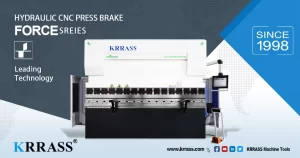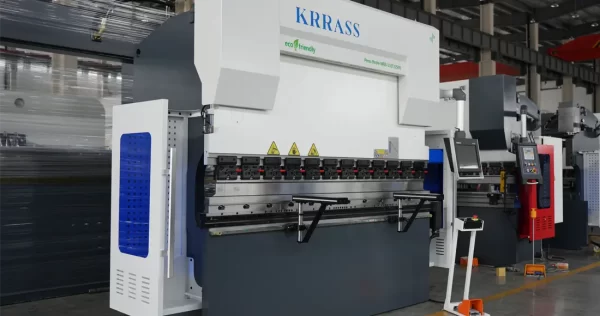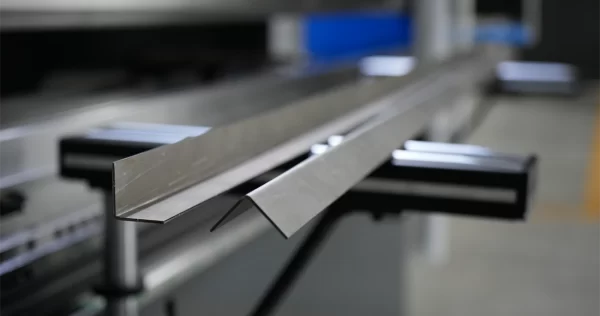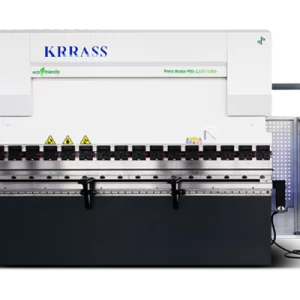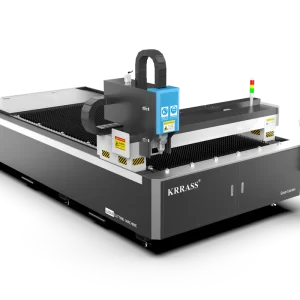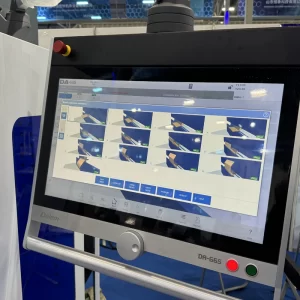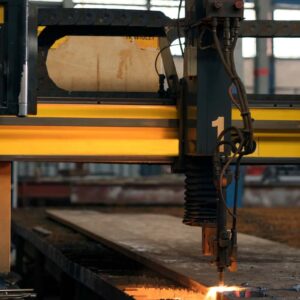This guide is designed to provide an in-depth insight into the world of panel bender. Whether you are a seasoned manufacturing professional or just beginning to explore the possibilities of metal fabrication, this guide is designed to enhance your understanding of sheet metal bending machines, their types, applications, and best practices in maintenance and safety. Delve into the fascinating world of panel bending technology, where efficiency meets precision.
- What is a Panel Bender?
- Types of Panel Benders
- The Working Mechanism of Panel Bender
- Applications and Industries of Panel Bender
- Advantages of Using Panel Benders
- Choosing the Right Panel Bender
- Maintenance and Safety
1. What is a Panel Bender?
Ever wondered how those sleek, perfectly bent metal panels in buildings, machines, and various appliances are made? The answer lies in a revolutionary piece of equipment: the Panel Bender. This innovative tool has transformed the way industries approach the bending of metal panels, offering precision, efficiency, and versatility that were once thought impossible.
At its core, a Panel Bender is a specialized machine used for bending sheet metal panels. It’s a game-changer in the metal fabrication industry, allowing for accurate and consistent bends. This is crucial in industries where precision is key, such as in the manufacturing of automotive parts, aerospace components, and high-end electronics.
The beauty of a Panel Bending machine lies in its ability to automate the bending process. Unlike traditional methods, which rely heavily on manual labor and are prone to errors, panel benders use advanced technology to ensure that each bend is perfect. This not only improves the quality of the end product but also significantly speeds up production times, making it a cost-effective solution for businesses.
What sets panel benders apart is their versatility. They can handle a wide range of materials, from thin aluminum sheets to robust steel plates, all with varying thicknesses and sizes. This adaptability makes them a valuable asset in any manufacturing setting, where the demands and specifications can change rapidly.
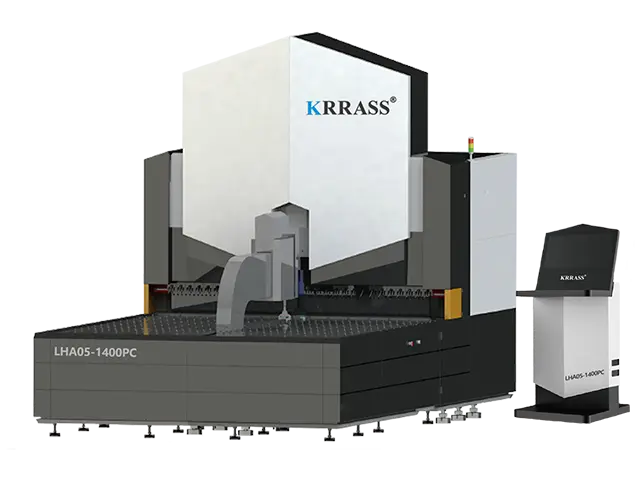
2. Types of Panel Benders
Diving into the world of Panel Benders, you’ll find a variety of types, each catering to different needs and specifications in the metal fabrication industry. Let’s explore the most common types of panel benders, highlighting their unique features and applications.
Manual Panel Benders: These are the simplest form of panel benders, requiring manual operation and control. Ideal for smaller workshops or low-volume production, manual panel benders offer simplicity and affordability. However, they do require skilled operators and are not as efficient for large-scale production.
Semi-Automatic Panel Benders: Offering a blend of manual and automated features, semi-automatic panel benders reduce the need for constant manual intervention. They are equipped with some automated controls for bending operations, making them suitable for medium-scale production with improved accuracy and speed.
Fully Automatic Panel Benders: At the forefront of technology are fully automatic panel benders. These machines are designed for high-volume production, offering the highest level of precision and efficiency. With advanced programming capabilities, they can handle complex bending tasks with minimal human intervention, significantly boosting productivity.
CNC Panel Benders: CNC (Computer Numerical Control) panel benders represent the pinnacle of panel bending technology. These machines are fully automated and controlled by computer programs, allowing for intricate and precise bends with high repeatability. CNC panel benders are ideal for industries requiring high precision and customization in their panel bending tasks.
3. The Working Mechanism of Panel Benders: How They Operate and the Bending Process Explained
To appreciate the ingenuity of Panel Benders, it’s essential to understand their working mechanism. This chapter delves into how these machines operate, explaining the bending process and the key components that make it all happen.
How Panel Benders Operate
Panel benders, whether manual, semi-automatic, or fully automatic, operate on the same basic principle: manipulating a metal sheet to achieve the desired bend. The difference lies in the level of automation and control. In manual benders, the operator physically manipulates the metal, while in automatic versions, this task is performed by machine-controlled elements.
The Bending Process Explained
The bending process in a Panel Bender typically involves placing the metal sheet on a workbench, securing it in place, and then bending it to the desired angle. The bending is achieved through a combination of downward force and angular movement, usually applied by a blade or bending tool. In advanced machines, this process is precisely controlled by software, ensuring consistent and accurate bends.
Key Components of Panel Benders
The effectiveness of a panel bender is largely determined by its key components:
- The Workbench: This is where the metal sheet is placed for bending. It needs to be robust and accurately aligned.
- Bending Blade/Tool: This component applies the force to create the bend. Its design can vary depending on the type of bend required.
- Clamping System: Essential for holding the metal sheet in place during the bending process.
- Control System: In automated benders, this is the brain of the machine, where the bending parameters are set and controlled.
- Software: For CNC and fully automated benders, software plays a crucial role in determining the precision and complexity of the bends.
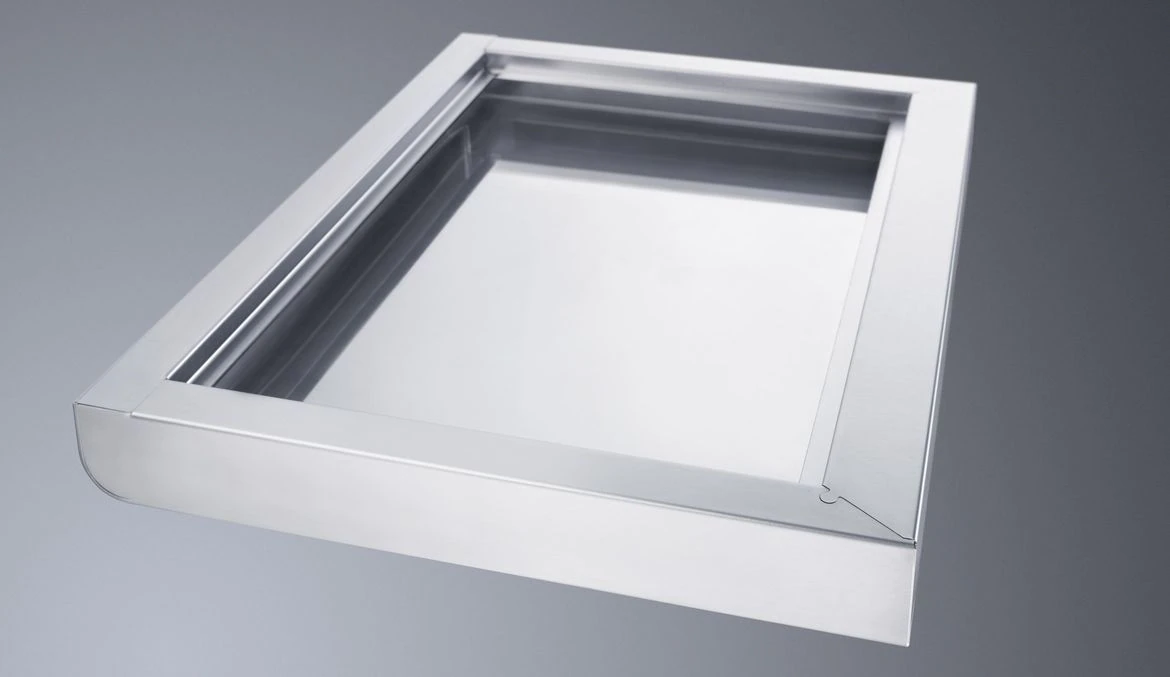
4. Applications and Industries of Panel Bender: Diverse Uses Across Sectors
Panel Benders are not just limited to one industry; their versatility allows them to be a cornerstone in multiple sectors. This chapter highlights the significant applications of panel benders in various industries, underscoring their pivotal role in modern manufacturing.
Automotive Industry
In the automotive sector, precision and efficiency are paramount. Panel benders play a crucial role in shaping the metal components that form the structural and aesthetic parts of vehicles. From the bodywork to intricate internal components, the ability to produce consistent, high-quality bends is essential. The use of Panel Bending machines in this industry not only speeds up production but also ensures the durability and safety of the vehicles.
Construction and Architecture
The construction and architectural realms have seen a significant transformation with the introduction of panel benders. These machines enable the creation of complex, custom-shaped metal panels used in modern building designs. From decorative elements to functional components like cladding and roofing, the precision of panel benders ensures that each piece meets the strict aesthetic and structural requirements of contemporary architecture.
Aerospace and Defense
In aerospace and defense, the demands for precision are even higher. Panel benders are instrumental in manufacturing parts for aircraft and defense equipment, where every millimeter matters. The strength, accuracy, and reliability provided by these machines are vital in creating components that can withstand extreme conditions and stresses, ensuring the safety and efficiency of aerospace and defense operations.
5. Advantages of Using Panel Benders: Boosting Efficiency, Precision, and ROI
Embracing Panel Benders in manufacturing processes brings a plethora of advantages, significantly impacting efficiency, precision, cost-effectiveness, and overall return on investment (ROI). Let’s delve into these benefits that make panel benders an invaluable asset in various industries.
Efficiency and Productivity Gains
One of the most compelling advantages of using Panel Bending machines is the remarkable improvement in efficiency and productivity. These machines can operate at a much faster pace compared to manual bending processes, significantly reducing the time taken for production runs. Automation reduces the need for constant human intervention, allowing for uninterrupted operation and faster turnaround times, which is crucial in meeting tight deadlines and increasing output.
Precision and Accuracy in Bending
Precision and accuracy are paramount in metal fabrication, and panel benders excel in delivering both. With advanced technology, these machines can achieve consistent and accurate bends, ensuring that every piece meets exact specifications. This high level of precision is especially critical in industries like automotive, aerospace, and construction, where even the slightest deviation can have significant implications.
Cost-Effectiveness and ROI
While the initial investment in a Panel Bender might seem substantial, the long-term cost savings and ROI are considerable. By enhancing productivity and reducing labor costs, these machines can quickly offset their initial cost. Additionally, the reduction in material wastage and rework due to their precision contributes to cost savings. Over time, the efficiency and quality improvements brought about by panel benders translate into a significant return on investment, making them a financially sound choice for businesses.
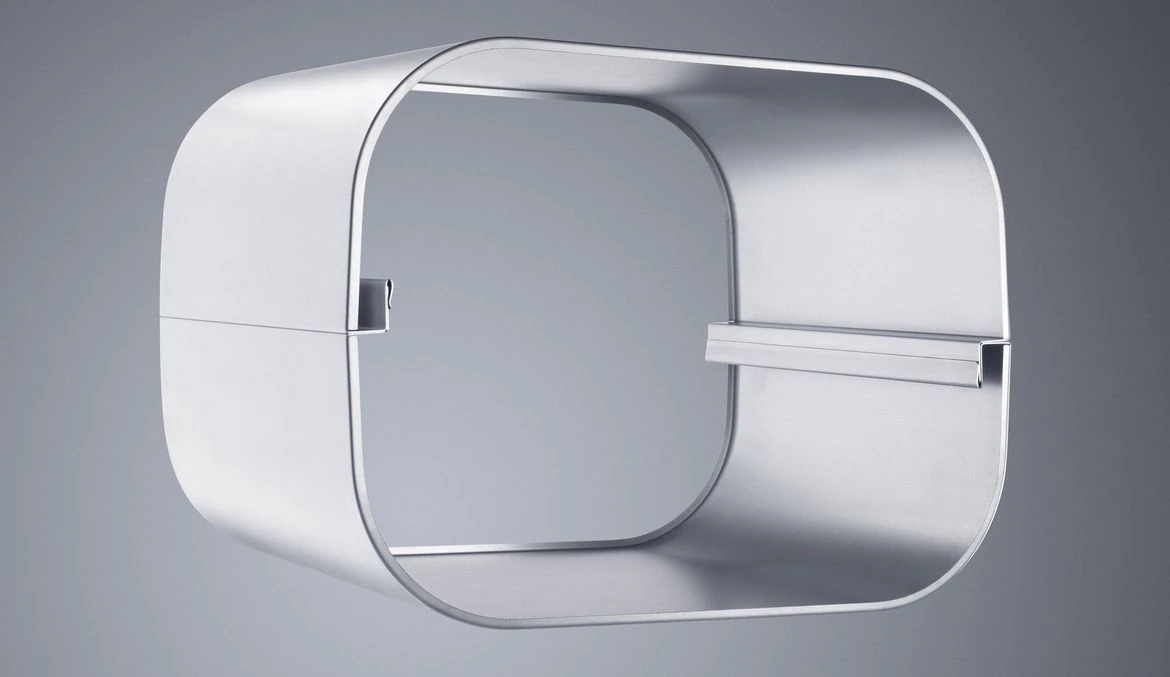
6. Choosing the Right Panel Bender: Key Factors for Making an Informed Decision
Selecting the right Panel Bender is crucial for achieving optimal performance and efficiency in your manufacturing process. This decision involves considering various factors to ensure that the machine you choose aligns perfectly with your operational needs. Let’s explore the critical aspects to consider when choosing a panel bender.
Factors to Consider
The selection process should start with a clear understanding of your production requirements, including the type of projects you handle, the volume of work, and the specific bending processes involved. This understanding forms the basis of evaluating the different types of Panel Benders available in the market.
Size and Capacity Needs
Size and capacity are pivotal factors. You need to consider the maximum size of the panels you will be working with and ensure the machine can accommodate them. Capacity also relates to the thickness and type of material the bender can handle. A mismatch in size or capacity can lead to operational inefficiencies or even damage to the machine.
Material Compatibility
Different panel benders are designed to work with specific materials. Whether you’re bending aluminum, steel, or any other metal, ensuring compatibility with the machine’s specifications is essential. This not only affects the quality of the bends but also impacts the longevity and maintenance needs of the bender.
Budget and Cost Considerations
Budget is a significant factor in any equipment purchase. While considering the cost, it’s important to look beyond the initial price tag. Evaluate the long-term costs including maintenance, spare parts, and the potential for upgrades. A cost-effective panel bender isn’t necessarily the cheapest upfront, but one that offers the best value over its lifespan.
7. Maintenance and Safety: Ensuring Longevity and Safe Operation of Panel Benders
Proper maintenance and adherence to safety protocols are crucial for the efficient and safe operation of Panel Benders. This chapter outlines key maintenance tips and safety best practices to ensure that these machines not only perform at their best but also provide a safe working environment.
Routine Maintenance Tips
Routine maintenance is essential to keep your panel bender in optimal condition. This includes regular cleaning to remove any debris or lubricants that may have accumulated, checking and tightening any loose components, and ensuring that all moving parts are well-lubricated. It’s also important to periodically check the alignment and calibration of the machine to maintain accuracy in bending operations. Scheduling regular inspections by a qualified technician can help identify and address potential issues before they escalate into major problems.
Safety Protocols and Best Practices
Safety is paramount when operating any industrial machinery, and panel benders are no exception. It is crucial to ensure that all operators are properly trained and familiar with the machine’s safety features and operating procedures. Key safety practices include wearing appropriate personal protective equipment (PPE), adhering to operational guidelines, and never bypassing safety mechanisms like emergency stops. Regular safety audits and drills can also help in maintaining a safe working environment.
Conclusion
In conclusion, the world of Panel Benders is vast and dynamic, with advancements constantly shaping the future of manufacturing and engineering. As a leading Chinese manufacturer and solutions provider in the realm of panel bending technology, Krrass stands at the forefront of innovation. With a commitment to quality and excellence, Krrass offers state-of-the-art Panel Bending machines that redefine efficiency and precision in metal fabrication. Visit www.krrass.com to discover how our expertise can elevate your manufacturing processes to new heights.
Read More:
CNC Press Brake Machine Crowning


